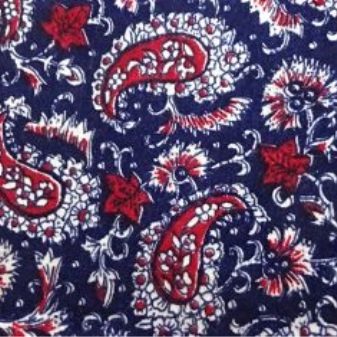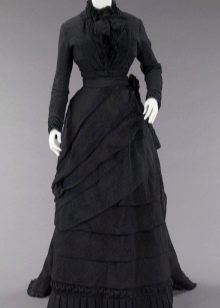Features of bumazey and the use of fabric

The fabric with the unusual name "bumazeya" is highly valued for its softness, heat-shielding properties, as well as hygiene. In this review, we will acquaint you with the history of the origin of the material, the peculiarities of its composition, hygienic and technical characteristics. We will tell you about the production technology, list the main areas of use and care requirements.


What it is?
Bumazeya is a fairly strong and dense fabric with a twill-type weaving, on the back of which there is a small fleece. Thanks to the latter, things made of bumazey become delicate to the touch, soft and very warm. In terms of hygienic and operational properties, this material resembles a bike and flannel, but is lighter and thinner. Bumazeye is made from natural fibers in accordance with the current standard GOST 29298-2005. This regulation defines the main technical characteristics of the material:
- weave type - twill;
- drawing - bleached, one-color, one-colored or printed;
- structure - the front side of the fabric is perfectly smooth, the back side provides for light short fibers;
- the fibers used are short and medium cotton threads;
- weaving density - in the range from 160 to 260 g / m2;
- hygroscopicity - from 6 to 12%, such a fabric quickly absorbs moisture and removes it in full;
- vapor permeability - high;
- air permeability - medium;
- the level of electrification is minimal.

The main advantages of bumazeye include a number of factors.
- Wide scope of use - this is a truly multifunctional canvas, which is in demand in various areas of production.
- Hypoallergenic - the basis of the fabric is made up of natural fibers, they do not cause itching even on the most sensitive children's skin.
- Softness - due to the fleecy layer, the fabric becomes tactilely pleasant, therefore, it is always comfortable and cozy in clothes made of paper.
- Density - due to the compacted structure of the threads, the matter retains heat for a long time. It is no coincidence that it is often used for sewing wearable items for the cold season.
- Affordable price - bumazey belongs to budget fabrics, anyone can buy clothes from it.
- Hygroscopicity - the material perfectly absorbs moisture and removes it just as well.
At the same time, there are also disadvantages. First of all, it is low wear resistance. Bumazeya is a short-lived material, it wears out and wears out very quickly.
The cloth is wrinkled and peeling, after washing it often shrinks. In addition, over time, its colors fade, and the product loses its original appearance.


Origin story
There is no single version about the origin of bumazeye. According to some sources, the fabric was invented by French weavers. Other information indicates that the canvas was already published in the 13th century in the territory of Valencia. According to third sources, Milan became the real home of this unusual material, where the fabric began to be produced in the XIV century. It is only known for certain that the fabric was made at the beginning of the 17th century. in Britain during the reign of Elizabeth I.
The origin of the name of the material also remains a mystery. Both the Italian word bombazine and the French word bombasin are translated as "cotton". Despite the similarity of the sound of "bumazey" and "paper", this material has never been used as parchment or papyrus for writing. Papyrus was made from plant crops, and animal skin was taken as parchment. Previously, the material that today we call bumazey was called bombazin. According to the descriptions, it was a silk fabric with a tight weave. A little later, this term began to define a material based on silk and linen fibers.



The very first type of paper production involved combining fibers. The basis was flax, Asian cotton with a shortened fiber was used as the weft, it did not differ in durability. Therefore, when a new type of cotton with an elongated fiber appeared, it became possible to completely exclude flax from the structure of the linen - as a result, the material became 100% cotton. Such fabric was made by the method of twill, less often crepe weaving.


In Russia, behind this fabric, the name of bumazey is firmly entrenched. At that time, its colors were not colorful and saturated, mainly the fabric was dyed in black tones and used to create clothing for mourning ceremonies. Due to the low cost of the fabric, combined with its durability, the demand for the fabric was very high. A little later, a technology for bleaching the canvas was invented and developed.
In this form, bumazeya began to be used for the manufacture of insulated underwear. From this fabric, they began to sew wardrobe items that can be worn in autumn and winter.


Species overview
Bombazin is presented in several variations. Each of them has its own technical characteristics and performance properties.
- Plain dyed - represented by canvases of bright saturated colors. A characteristic feature of fabrics of this type of fabric is that the color retains its brightness for a long time. This is largely facilitated by a special pigment application technology, in which the fabric is placed in a container with a dye for several hours. As a result, the surface of the web acquires a uniformly colored, homogeneous structure.

- Printed - in this case, the print is applied to the canvas. The print can be placed on one or both sides. This technique allows for a permanent pattern without altering the structural characteristics of the fabric.

- Bleached - the safest and most environmentally friendly version of the fabric, the material is made without the use of any dyes. The fabric is 100% hypoallergenic, so it is used to create bedding sets for children and army linen.

- Back-napped fabric - is the result of a special treatment in which the ends of individual fibers are brought out to the outside. As a result, a relief is formed with alternating fleecy and flat areas.

- Bumazeya cord - a very harsh fabric that is intended for technical purposes. It does not undergo any special processing, it is usually used to make the inner elements of shoes, covers for grand piano hammers and other similar things.

Application
In centuries past, black bumazey has caused a lot of trepidation. Until the beginning of the XX century. mourning clothes were made from it. Nowadays, the use of this fleecy fabric is much more rosy - comfortable home clothes for all family members are sewn from it:
- women's dresses;
- warm jumpers and sweatshirts;
- Men's T-Shirts;
- shirts;
- pajamas;
- robes.
Bright fabrics can make stylish curtains and curtains. They are widely used in the organization of interiors in Japanese aesthetics. Such decorative elements are in demand when decorating home premises; they are used in cafes, restaurants and hotels.
Plain dyed canvases are widely used for technical needs. And the inner elements of leather products are made from paper cord.



Care rules
Despite the completely natural composition, bumazey is a rather capricious material, it needs special care. In order to reduce the level of peeling of the pile surface and preserve the visual characteristics of the web for as long as possible, you should adhere to the basic rules. Before opening, the fabric must be washed in warm water in order to shrink it, or it must be designed. To wash things from bumazey should be on delicate modes. The water temperature should not exceed 40 degrees, the speed should be set at the minimum mark. When choosing cleaning agents, preference is given to gentle ones. It is unacceptable to use powders and gels containing chlorine and other aggressive bleaching components.
Bombazine products are dried in a flattened form on a horizontal surface. At the same time, it is necessary to protect the fabric from the action of direct ultraviolet rays - this is due to the instability of shades of boomazey. Ironing can be done only after the final drying of the product and exclusively from the inside out.
For several centuries now, bumazey has been taking care of children and adults. Products from it can be found, probably, in any home. This is tactilely pleasant, warm, incredibly soft, while the budget fabric can give everyone real comfort and family coziness.










